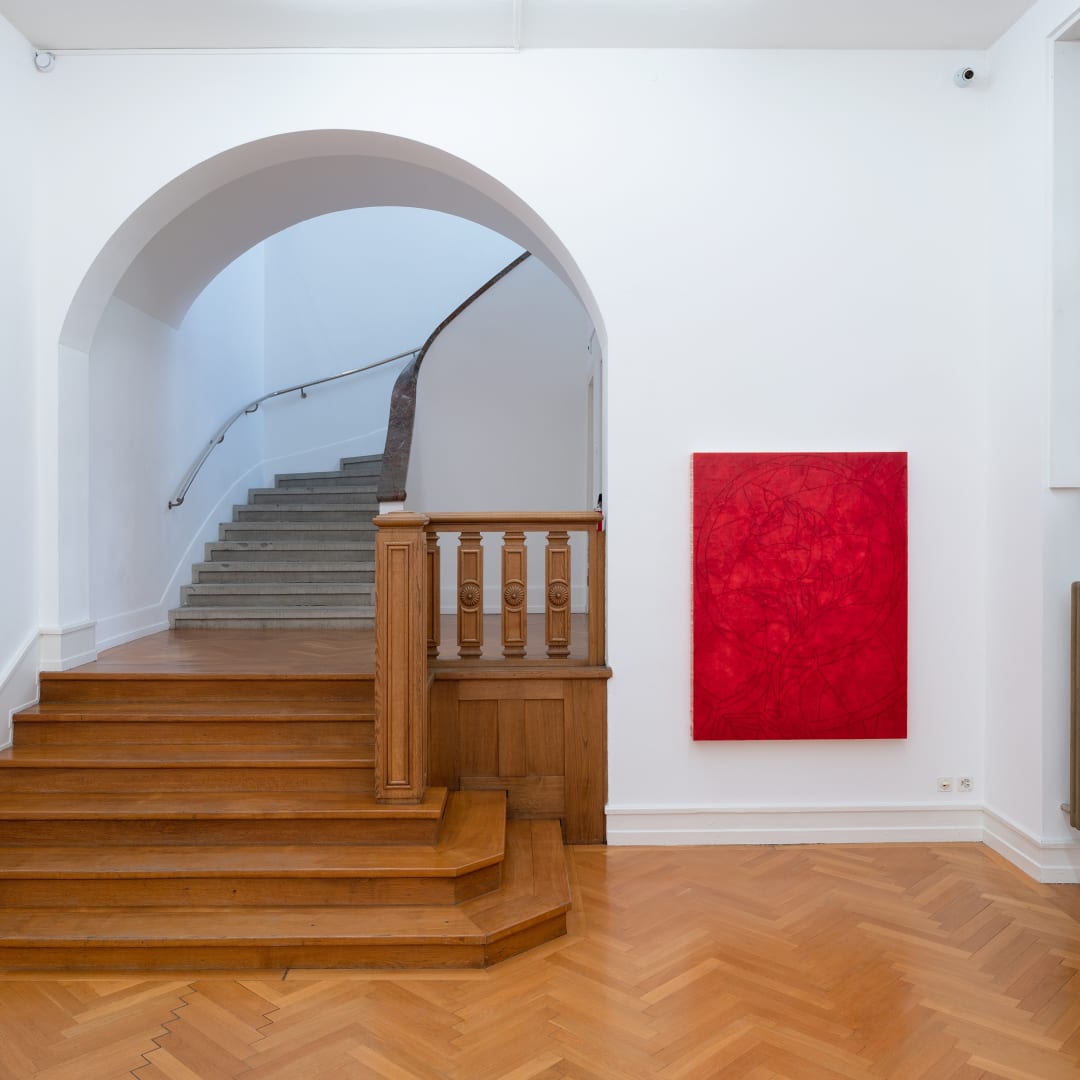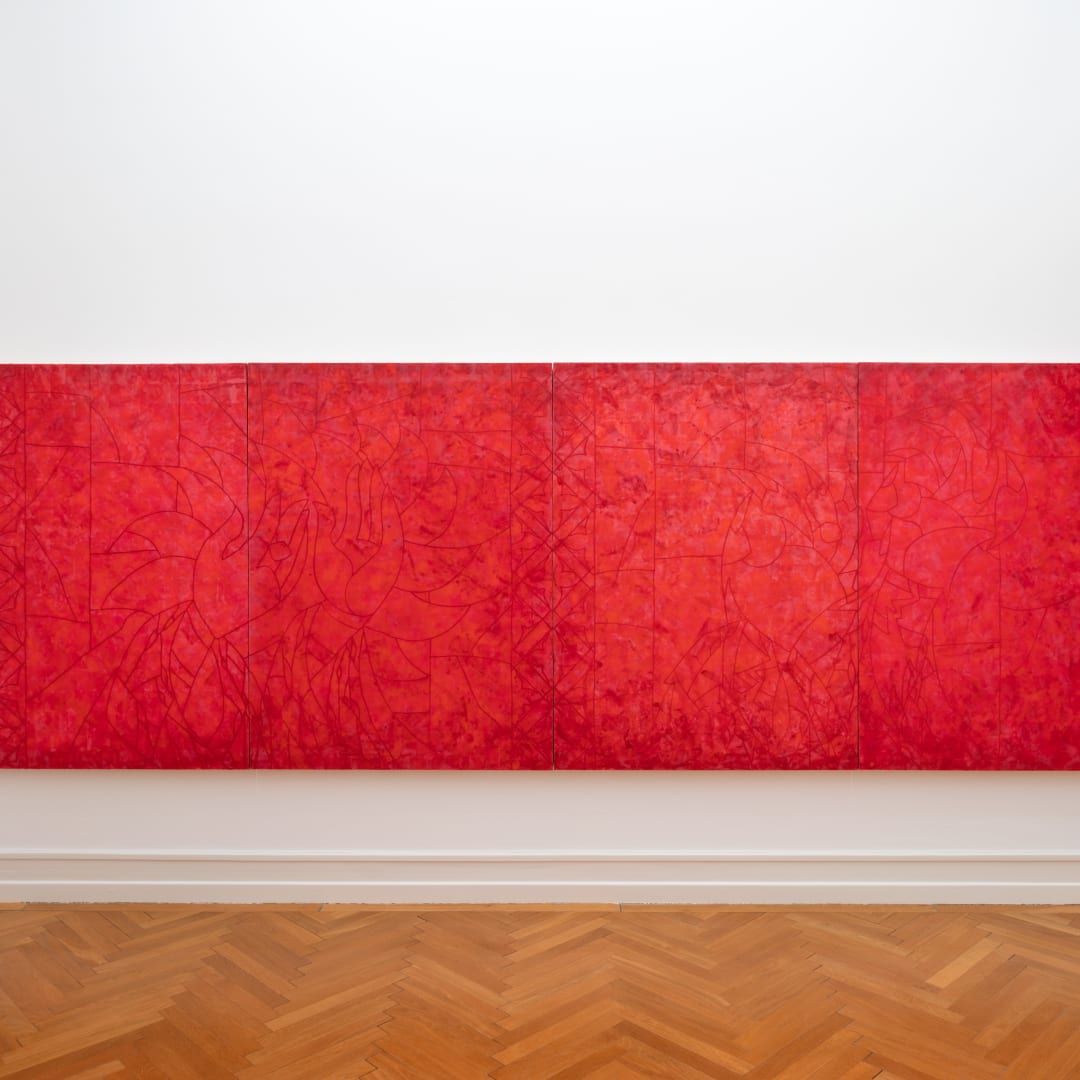Lose Enden
group show
March 27 – May 16, 2021
Half a century ago, a German Communist wrote on a canvas the words “stop painting!”. As luck would have it, he didn’t even stop painting himself. His slogan didn’t fall on deaf ears, but rather made the rounds as a prophecy that was never quite fulfilled. To this day, the fact that painting lives on continues to be a source of irritation to those who consider it hopelessly commercialised and backward. But is it really going nowhere? The answer would appear to be no: artists remain profoundly committed to the medium and are constantly finding new ways to confront its fraught history and controversial reputation, while broadening the possibilities of what painting could be. The death of painting was announced over a hundred years ago, and yet it lives on. When the artist chess-player pronounced it a mere retinal art, and proclaimed in its place the readymade, he succeeded only in persuading artists to incorporate the lessons of conceptual art into their thinking about painting. Pretty soon, people stopped thinking about art as something that developed in a single, linear direction anyway. And contemporary art, which took the place of modern art, no longer followed universal rules that had been declared valid at a certain point in time only to be quickly superseded by others. The rules have come to be debated on thirty different playing fields at the same time. Although this makes life for artists who paint more difficult, the diversity does also offer certain freedoms. It would be a mistake to confuse this wealth of possibilities for the principle of anything goes. Anything does not go. Though students in art schools may be painting again as if painting had no history, most have come to feel its burden by the time they leave the shelter of the academy. History remains a terrain they must find a way of relating to, and their work must withstand comparison with everything that has already been done. And yet, for all that it may seem that every possible picture has already been painted down to its last brushstroke, artists continue to produce paintings that have never been seen before. Just when every- thing seemed to have been done, another turning suddenly emerges in the gaps, without which history would never have been able to progress.
The artists brought together in Lose Enden are writing the latest chapters in the history of painting, while not necessarily regarding themselves as painters. In contrast to the practice of preceding generations, their differences are less likely to be expressed in gestures of hesitation and scepticism. Many draw upon an abundance of resources, acutely aware of the formidable conventions with which they are engaging. Faced with the prospect of having to add to the vast system of images, narratives and ideas, they seem to exhibit a remarkable self-confidence. Something has changed. Only ten years ago, painting was being discussed in terms of its capacity to reproduce circuits of social and economic power – networks were detaching it from what it referred to. In Lose Enden, the relationships emerging from beneath the surface appear neither to be restricted to particular networks, nor entirely distinct from others. Notions of this kind, conceived in metaphors of digital complicity, have bottomed out. Relationships tend again to be thought of in isolation from each other, as if people were watching each other at work in their glass studios, rather than actually meeting and exchanging ideas.
With Mitchell Anderson, Tina Braegger, Leidy Churchman, Paul Czerlitzki, Georgia Gardner Gray, Julia Haller, Annina Matter / Urs Zahn, Yoan Mudry, Vera Palme, Elif Saydam, Dominik Sittig, Hans Stalder
Curated by Valérie Knoll and Julia Künzi
For further information, please visit the website:
https://kunsthalle-bern.ch



